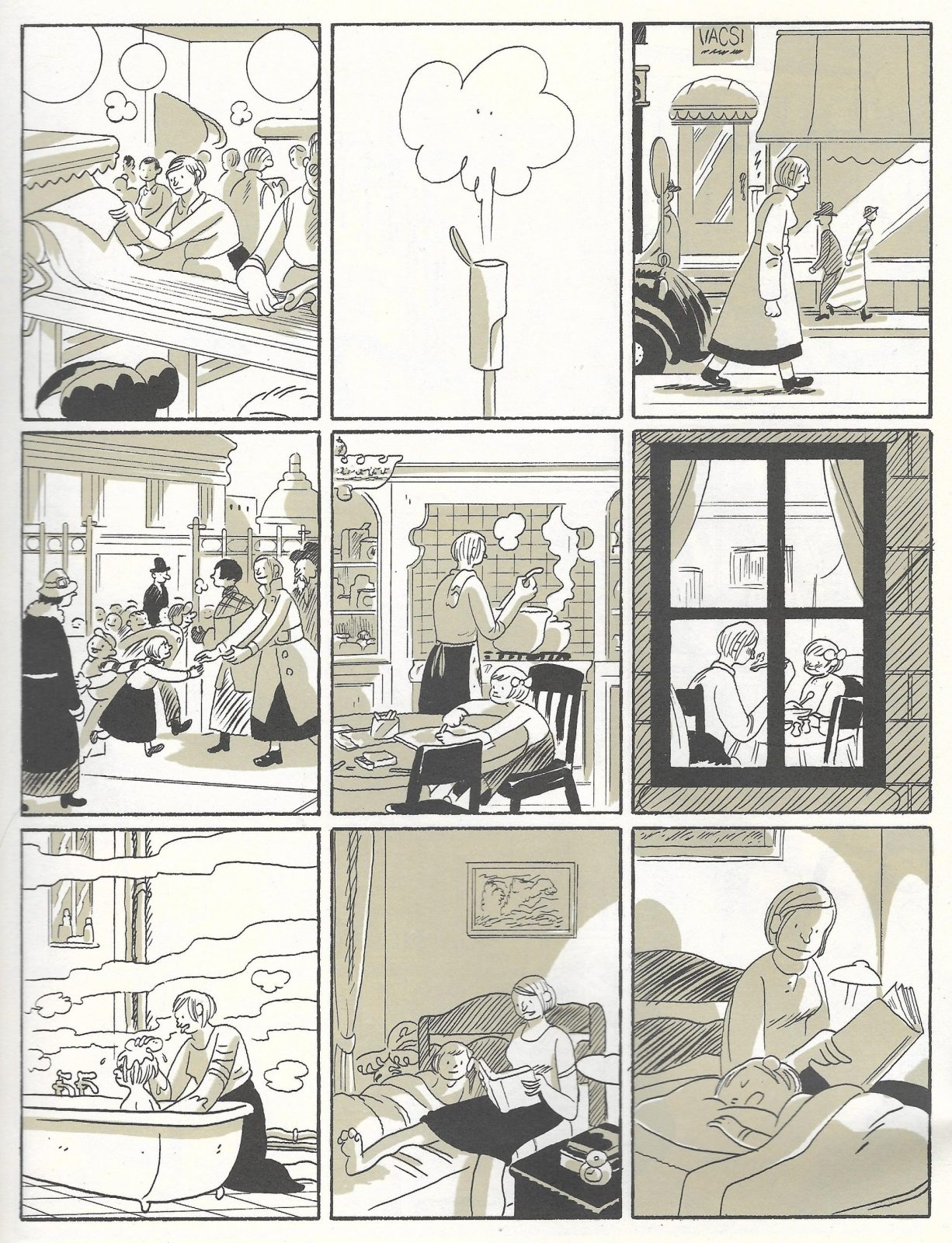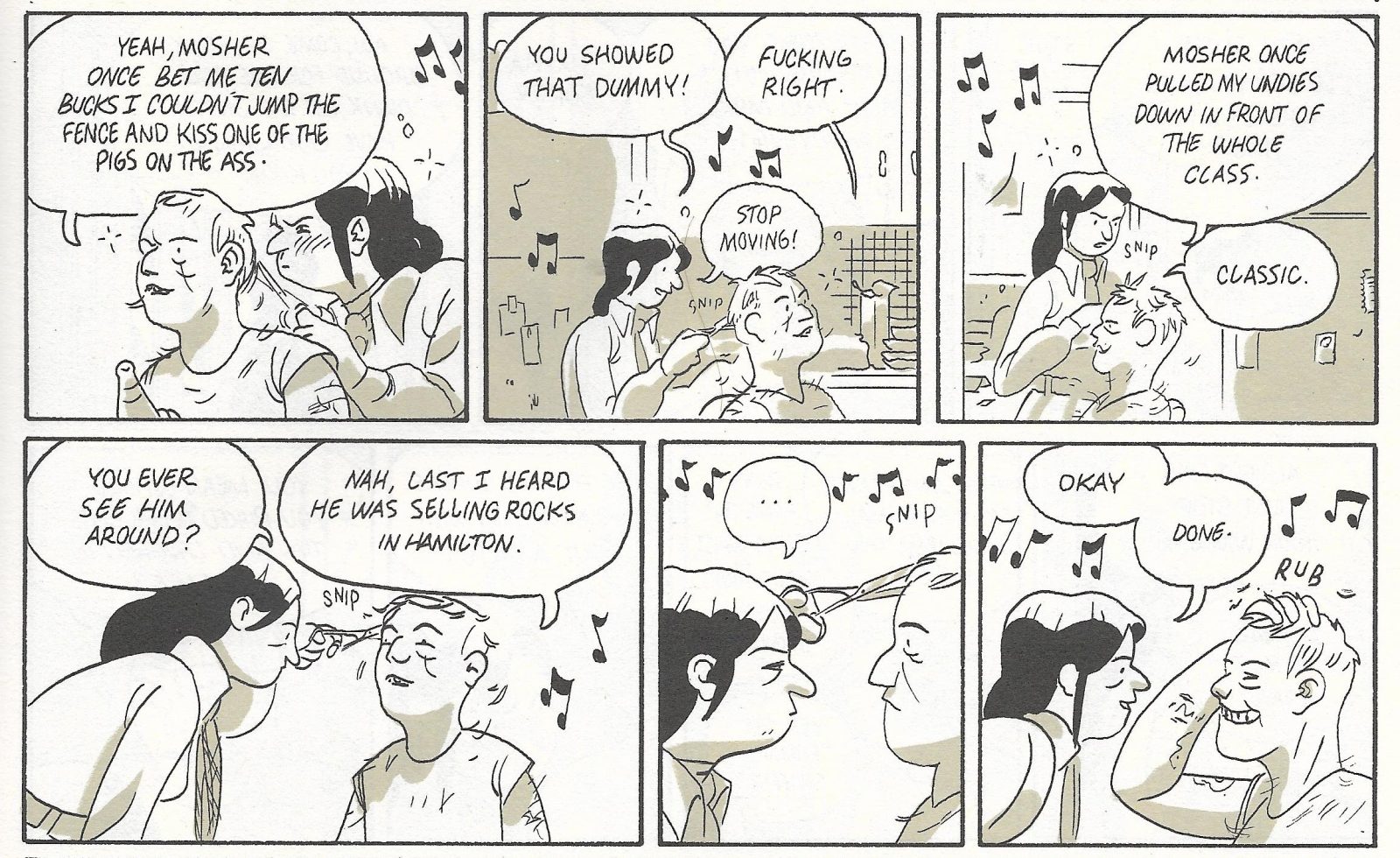Up until now, “Blood of the Virgin”, the ongoing Hollywood saga Sammy Harkham has been serializing in his one-man anthology series Crickets, has been focused squarely on Seymour, a luckless would-be filmmaker who, in the previous issue, saw his dream of becoming a director come crashing down around him due to his own stubbornness and self-absorption.
It would be fair to assume that the latest chapter would pick up right where that left off, with Seymour in jail, but Harkham takes a sharp left turn here, devoting the entire issue instead to Seymour’s long-suffering wife, Ida, now visiting her family in New Zealand.
But first, however, we get a wordless opening sequence that completely reframes the story thus far, pulling back to provide a wider historical approach. Set in Budapest in 1942, we initially witness the life of a single mom and her young daughter as they go about their daily business - getting dressed, going to school, working at a printing factory. This, we eventually learn, is Ida’s mother, although the child is not Ida. And all is far from idyllic, as there are loud explosions in the night and, eventually, soldiers come knocking at the door. And then there is tremendous loss and destruction.
Harkham uses repeated motifs to great effect here: the mother constantly waking up in a chair or sofa, walking by a wall that becomes littered with Nazi posters, and eventually is reduced to just rubble. A steam whistle signals the end of a work day, or perhaps just change.
It might seem odd at first that Harkham is making such a sharp left turn in the series at this point (for reference’s sake, the first chapter of “Blood of the Virgin” appeared in Crickets #3, way back in 2010). But issues of race, ethnicity and the atrocities of history have been simmering below the surface throughout the series. Seymour, for example, is not only Jewish, but Iraqi, and there is a running “gag” about people mistaking his ethnic origin (one character in this latest issue mistakes Iraqis as a Native American tribe, while another calls him “Mohammed”). En route to a party in issue #5, Ida laments how the people there don't consider her a real Jew because her family is Ashkenazi. And, at that party, old-timers reminisce about their homeland, vaguely hinting at miseries narrowly avoided.
But overall what this genuinely stunning and heartbreaking sequence does is remind us of real horror, the sort that Blood of the Virgin—the eponymous grade-z shocker that Seymour has been trying to cobble together—can barely even allude towards. Casting a wider net, it makes both Seymour’s and Ida’s grievances and struggles seem both petty and something to be cherished. This older woman has suffered in a way that those closest to her will never know and cannot ever truly understand.
Harkham’s art throughout this latest issue has a much looser, more relaxed feel than in previous episodes, which is not to say it comes off as sloppy or rushed. Quite the opposite in fact. His eye for detail and mastery of cartoon language remains as strong as always. But there’s a slight relaxing of the reins here; his pen line seems less tight, less controlling than in previous issues, and it aids considerably in the sort of day-to-day melodrama that Harkham is trying to convey as Ida maneuvers around her family and friends and considers a new life with a former friend/boyfriend.
What’s perhaps most notable in this issue are the facial expressions. Harkham certainly has been no slouch in that department before, but here he seems to have taken a step up, to my eyes drawing on Jaime Hernandez in an attempt to portray side glances and stares that convey mixed emotions roiling beneath the surface: the longing in the old boyfriend’s eyes as he dares to hope for a rekindled romance; the crazed anger and frustration of Ida’s clearly troubled (and likely anorexic) sister. And throughout it all, there is Ida’s mother, who barely speaks throughout the comic, but observes it all in silent judgment - or perhaps bewilderment mixed with despair.
Wonderful too is the subtle pacing of this issue, the way the characters’ true selves are slowly revealed. The old boyfriend, Snoopy, for example, first comes off as an obnoxious lout, but slowly we start to see how deeply he is looking for love and a family for his daughter. He gains so much of our sympathy by the end that a climactic act of violence, though brutal and unconscionable, is nevertheless understandable given his hurt - and, it continues Seymour’s seemingly endless streak of bad luck.
Harkham declares this to be the penultimate chapter of the story, but I could easily see him going on indefinitely, pulling back to reveal more about various supporting characters and their troubled stories, a la Rusty Brown. I’m glad that “Blood of the Virgin” does have a set conclusion coming–it deserves one–but I kind of wish it didn’t all the same.













